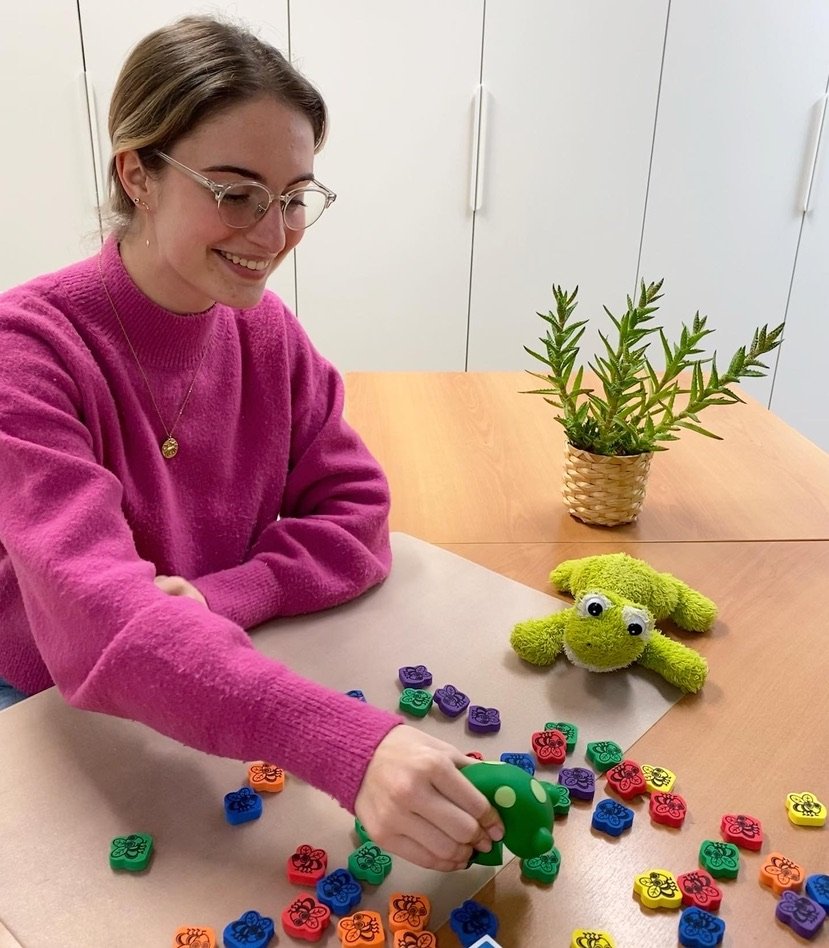Reframing fluency
Always having had a particular interest in stuttering, I am now certified as a European Stuttering Specialist (CESS) after obtaining the ESS postgraduate degree and engaging in continuous learning through courses, symposia, expert discussion groups, and workshops. I am currently the only therapist in Denmark holding this certification.
My learnings and experiences taught me to reframe the term ‘fluency’. After all, nobody speaks 100% fluently, so expecting this from yourself or your child can be quite a lot. At Flow Therapy, effective, confident communication, whatever that means to you, replaces ‘fluency’ as the main goal. We decide on the therapy path together and regularly tune in to make sure our journey stays headed towards your intended destination.
Take a look below to better understand how I can help people of all ages with stuttering and its lesser known cousin: cluttering.
The above pictures are from previous children’s group therapies
Stuttering
In a nutshell, stuttering is disfluency in speech characterised by repetitions, prolongations, and/or blockages. At these times, someone who stutters briefly loses control over their speech. Unpleasant experiences and reactions to stuttering can lead to negative associations with stuttering over time. These can then create a bigger problem of excessive tension, avoidance, negative feelings, and more, exacerbating the stuttering. Everyone who stutters is different; thus, stuttering treatment is always tailored to the individual.
Young children come to therapy together with a parent or guardian, while older children and adults choose whether to bring someone with them.
In addition to individual therapy, group therapy for people who stutter, their (grand)parents, and teachers are offered. These include information, tips, and skills, which we discuss and practice together. The participants' own experiences and input are what makes these sessions so valuable.
Young children
Stuttering can most easily be treated at an early age, so it is appropriate to start as early as possible. After a conversation and assessment, the speech therapist consults with the parent/guardian about whether the child should begin therapy. We can work on the stuttering both directly and indirectly.
Not (yet) needed? Then, you will receive concrete, evidence-based tips to work with at home.
Older children and adults
Every person who stutters has their own story. Unpleasant experiences can cause the development of negative feelings and thoughts about speaking. In therapy, we work on this. We also work on communication skills and speaking techniques.
We will quickly take your new skills out of the four walls of the therapy room and implement them into your real life, including all your languages in the program.
Cluttering
Cluttering is a communication disorder in which a person talks very fast or at an irregular speed, leading to intelligibility problems. Symptoms can present as high numbers of disfluencies, imprecise articulation, ‘swallowing’ parts of the sentence, and loss of control over sentence structure.
It is difficult for someone who clutters to monitor their speech inaccuracies on the spot. They often only realise the unintelligibility when the conversation partner reacts confused. Cluttering can be frustrating for the person who has it and the people in their environment.
Following diagnosis, the person who clutters and those closest to them learn how to manage the speech monitoring issues so that daily communication goes smoother. After gaining a thorough insight into the own speaking habits, we learn and practice techniques to employ whenever preferred.










